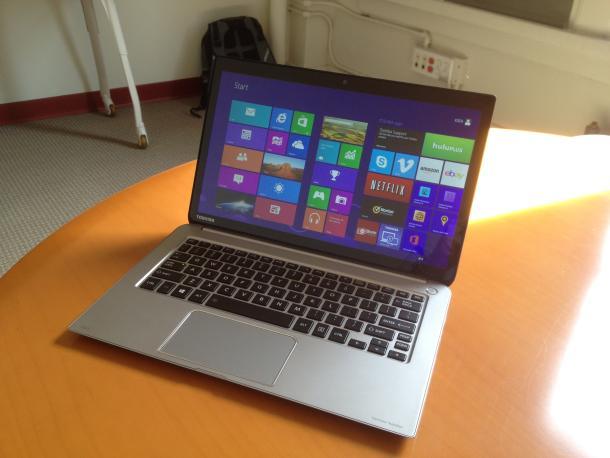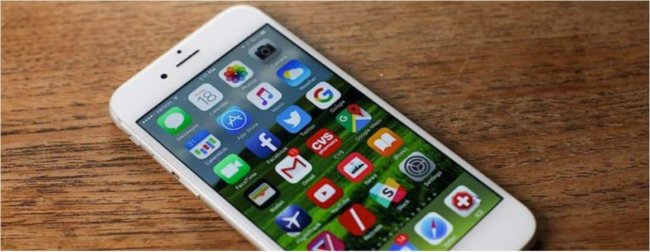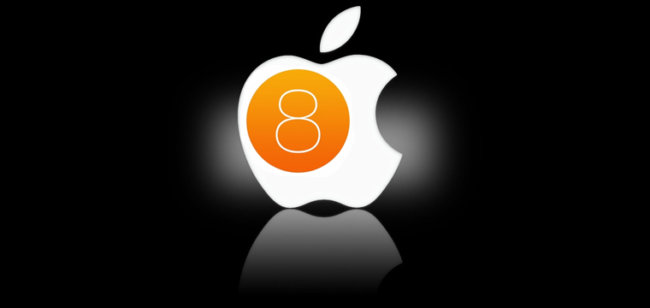If the bulk of current evidence is to be believed, there’s a sweet spot in laptops right now around $799 to $999, where nearly any PC maker seems to be able to produce a slim, touch-screen laptop with an aluminum body running an Intel Core i5 CPU and a 128GB SSD.
Operating at the upper end of the laptop category is much more difficult, and very few brands have been able to create products that can successfully sell for $1,500 to $2,000. Apple is a rare exception, and if you’re pitching a laptop that costs as much or more than a comparable MacBook, that’s what we would describe as a bold move.
 (Credit: Dan Ackerman/CNET)
(Credit: Dan Ackerman/CNET)Toshiba, long a well-known brand in that midprice space, has thus far relied on its multimedia Qosmio line for more expensive laptops. But, these have been large desktop-replacement-style laptops, with big, bulky bodies, discrete graphics cards, and even 3D displays. While often a good value considering the high-end hardware inside, these systems are a far cry from the slim, premium ultrabooks that style-savvy consumers may be willing to pay more for.
To break into this high-end, high-style category, Toshiba is launching a new product line called Kira. The first product in that line is a 13-inch laptop called Kirabook. This is a 13-inch ultrabook, with high-end features that rival — and in some cases beat — anyone else in the market.
The Kirabook’s biggest selling point is its high-res screen. Far beyond 1,920×1,080, this is instead a 2,560×1,440-pixel-resolution display (called PixelPure), putting it firmly in the territory of the MacBook Pro with Retina Display. Of course, that also includes MacBook-Pro-like prices, with the Kirabook running from $1,599 to $1,999.
 (Credit: Dan Ackerman/CNET)
(Credit: Dan Ackerman/CNET)Surprisingly for a 2013 luxury laptop, some models will offer touch screens while others will not. As of our recent hands-on briefing with the Kirabook, the base $1,599 model will not include a touch screen, but one will be available as a $100 upgrade. Will anyone spend $1,599 on a non-touch-screen laptop? Perhaps — Apple buyers do it all the time. But, what works for Apple doesn’t always translate to other brands (case in point: Dell’s Air-like Adamo laptop).
Another big selling point is the magnesium body. Using magnesium instead of aluminum saves weight and still provides great strength, and the Kirabook weighs a enviable 2.6 pounds. Toshiba is also including upgraded service and support (including a two-year warranty and U.S.-based 24-hour phone support) to help sweeten the deal.
In our brief hands-on time with the Kirabook, it certainly was thin and light, and it felt physically very well put-together. The high-res screen looked amazing when playing native resolution video content — as it would on a Retina MacBook Pro or Google Pixel Chromebook.
 (Credit: Dan Ackerman/CNET)
(Credit: Dan Ackerman/CNET)But, aside from the display, the rest of the system has a premium, but not necessarily luxury, feel. The magnesium body was finished so that it looked a lot like Toshiba’s less-expensive laptops, such as the excellent Satellite U845t ultrabook, which has a Core i5 processor and 128GB SSD for $799. Those two systems aren’t identical, but the Kirabook, while nicer, certainly doesn’t look like it costs twice as much.
Put another way, after seeing it and hearing the specs, we took guesses at how much the Kirabook would cost — and we weren’t even close.
A handful of laptops have tried for this kind of premium pricing recently. The Acer Aspire S7 is one example, but it at least brought a radically eye-catching design to the table (and some versions are already down to about $1,000).
Still, it’s great to see more PC makers embracing higher screen resolutions, and Toshiba has a commendable knack for putting itself out there early on, pioneering everything from autostereoscopic 3D to affordable ultrabooks.
The Kirabook will be will be available for pre-order on May 3 and for purchase on May 12, through outlets including Amazon, BestBuy.com, B&H, and the Microsoft Store.









